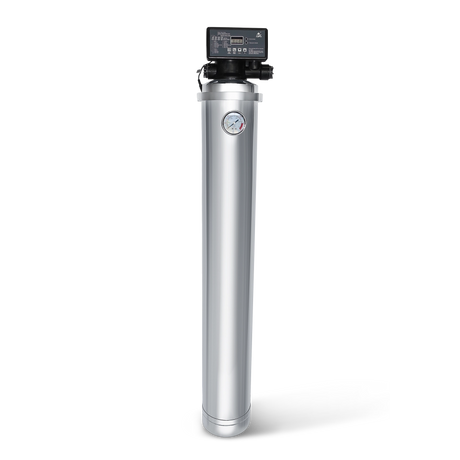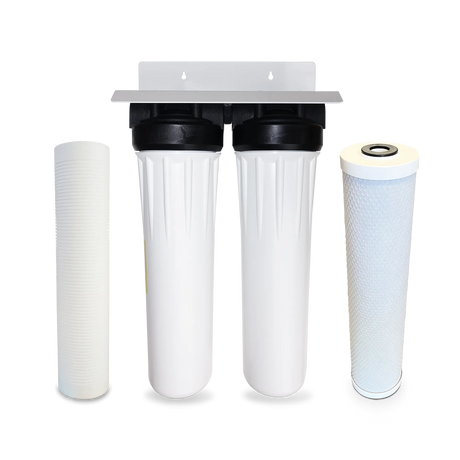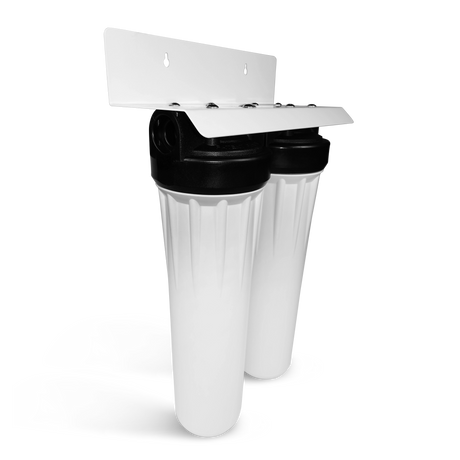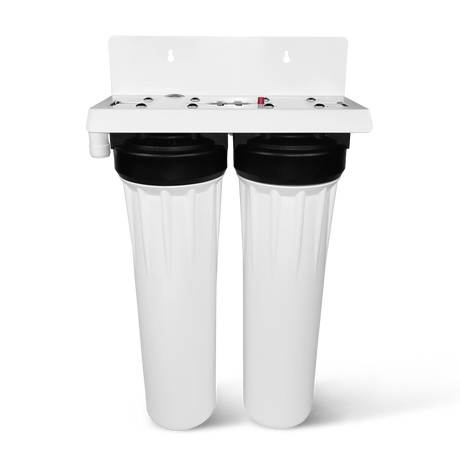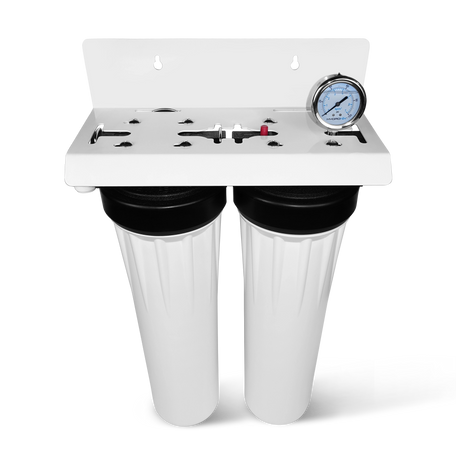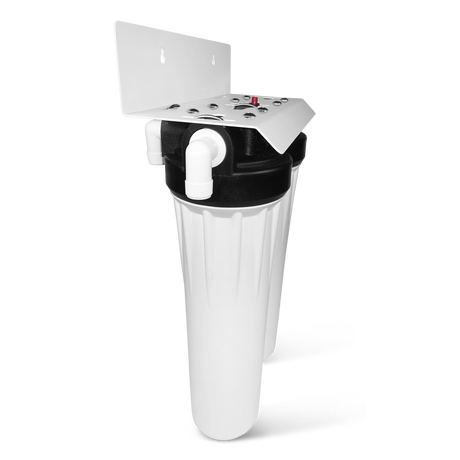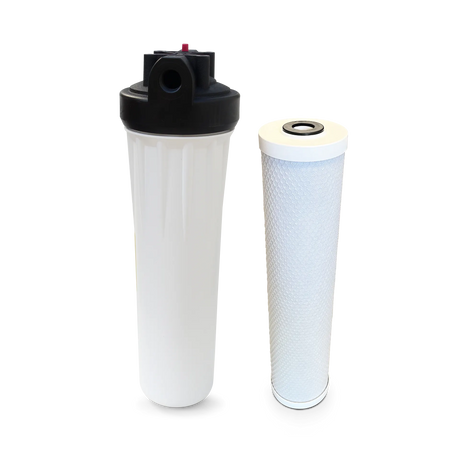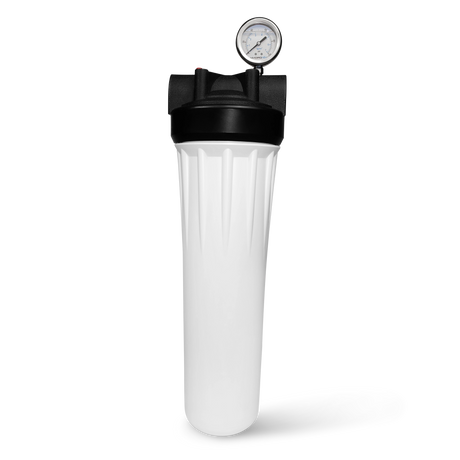Whole House Cartridge Filters vs. Backwash Tank Filters: Why Cartridge Systems Come Out on Top
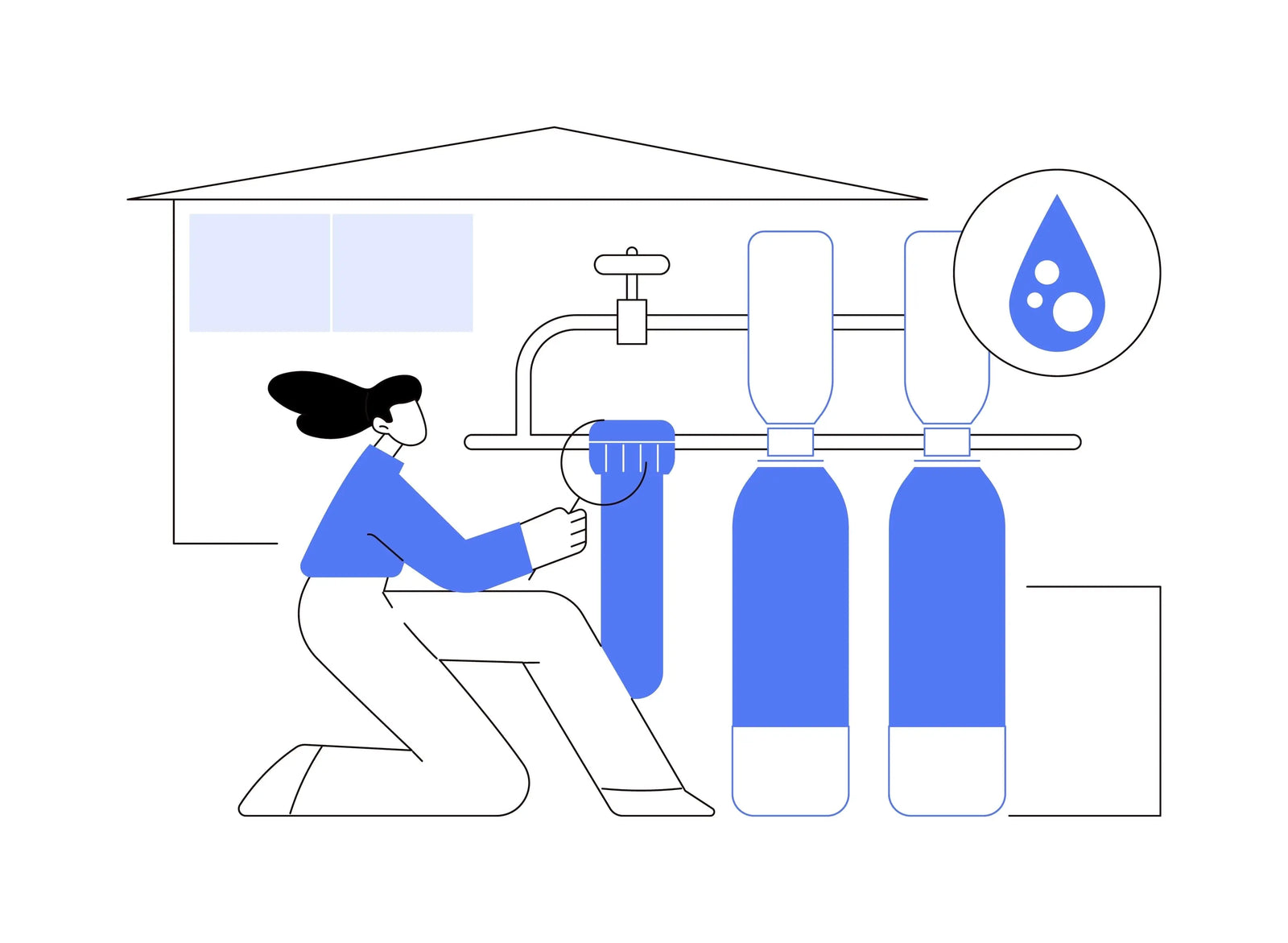
Clean, safe water is essential for every household, and a whole house water filtration system ensures that every tap in your home delivers high-quality water. When choosing a system, homeowners often face a key decision: Should they purchase a backwash tank water filtration system or a cartridge water filter?
While tank-based systems have long been the industry standard, they come with significant downsides, including high costs, maintenance challenges, and potential bacterial growth. On the other hand, whole house cartridge water filters offer efficiency, space savings, and reduced contamination risks. But which is the right choice for your home? Let's break down the pros and cons of each system so you can make an informed decision.
What Do Whole House Water Filters Do?
Whole house water filters treat all the water entering your home, ensuring clean water for drinking, cooking, bathing, and appliances. These systems remove contaminants like chlorine, sediment, heavy metals, and other impurities before the water reaches your taps.
Having a whole house system in place is critical, especially if you rely on municipal water, which often contains chlorine or chloramine, or well water, which can have high levels of sediment, bacteria, and minerals like iron and manganese. A well-chosen filtration system can prevent these contaminants from affecting your health, plumbing, and appliances.
Understanding Cartridge and Backwash Tank Water Filtration Systems
Cartridge and backwash tank systems are two common types of whole house water filtration systems, both designed to remove contaminants and improve water quality. The key difference lies in their filtration method.
Cartridge Systems
These systems use a canister—made of plastic or stainless steel—that holds a replaceable filter or membrane to trap sediment, chlorine, and other impurities. Some advanced cartridge systems with ultrafiltration membranes feature a backwash function to flush out contaminants, extending filter life. Cartridge systems require regular filter replacements, ensuring fresh filtration media with no fouling or efficiency loss.
Examples of cartridge tank systems: Big Blue single or multi-stage systems or ultrafiltration systems.
Backwash Tank Systems
These systems feature a large tank made of polypropylene, polyethylene, or fiberglass-reinforced material, often wrapped in metal for a more polished look. Inside, loose filter media removes impurities from incoming water. During backwash, the system flushes out accumulated contaminants through a self-cleaning process. While the media lasts for years, it can degrade or foul over time, reducing filtration efficiency.
Examples of backwash tank systems: US Water Systems Bodyguard, LifeSource Elite Series 1620, Aquasanaa Rhino.
Both cartridge and tank systems options may include a backwash feature, but their long-term maintenance and performance differ. Understanding these differences can help you choose the best system for your household’s water needs.
Would You Rather Change the Oil or Replace the Entire Engine?
Think of cartridge filtration systems like changing the oil in your car. You regularly replace the filter, ensuring optimal performance, efficiency, and longevity for your system—just like fresh oil keeps an engine running smoothly. It’s a simple, predictable maintenance task that prevents buildup and keeps everything working at its best.
On the other hand, backwash tank systems are like owning a car with a sealed engine that you can’t service. Instead of refreshing the oil, you’re forced to run the engine for years until it starts losing efficiency, accumulating sludge, and potentially failing. When that happens, you don’t just change the oil—you have to replace the entire engine.
With cartridge systems, you get fresh performance with every filter change, while backwash tanks rely on aging media that degrades over time, leading to reduced effectiveness and costly replacements.
Now, let’s step beyond the car analogy and break down the real pros and cons of whole house tank and cartridge filter systems.
Whole House Tank Water Filter Systems
How They Work
Tank-based filtration systems use a large media tank filled with filtration materials like carbon, KDF, or resin to trap and neutralize contaminants. These systems periodically clean themselves by reversing the flow of water to flush trapped particles down a drain, allowing the media to be reused.
Filtration Stages
- Sediment Filtration – Captures large particles like dirt, rust, and sand.
- Carbon Filtration – Removes chlorine, chloramine, volatile organic compounds (VOCs), and bad odors.
- KDF (Kinetic Degradation Fluxion) Media – Targets heavy metals like lead and mercury.
- Resin-Based Filtration – Softens water by reducing scale-causing minerals.
Common Applications of Tank-Based Systems
Tank-based systems are commonly used in homes with high water usage, such as large families or multi-bathroom households. They are also popular in areas with heavily contaminated water sources where long-term, high-capacity filtration is needed.
Pros of Tank Water Filter Systems
✅ High Capacity – Can handle a large volume of water, making them suitable for big households.
✅ Long Media Life – Some media types last several years before needing replacement.
✅ Effective for Specific Contaminants – Can be optimized for sediment, chlorine, heavy metals, and more.
✅ Better for High Water Usage – Ideal for homes with multiple bathrooms and high water consumption.
Cons of Tank Water Filter Systems
❌ High Upfront Cost – Tank systems are expensive, with installation often pushing total initial costs beyond $2,000–$4,000.
❌ High Rebed Cost – Replacing the filter media can cost hundreds of dollars, adding to long-term expenses.
❌ Bacteria Growth Risks – Stagnant water inside the tank creates an environment where bacteria can thrive.
❌ Media Degradation Over Time – Filtration media lose effectiveness, requiring costly replacements.
❌ Media Fouling – Accumulation of organic matter can cause odors and require disinfection or media replacement.
❌ Media Leakage – Structural issues can cause filtration media to escape into the water supply, requiring system repairs.
❌ Increased Maintenance – Frequent backwashing and periodic media replacement add to maintenance costs and effort.
❌ Potential for Clogged Distributors – Internal tank components can become clogged over time, reducing filtration efficiency and requiring repairs.
❌ Bulky and Space-Consuming – Requires a dedicated installation area, which may not be ideal for smaller homes. Additionally, backwash tank systems may still require a cartridge filter for pre-filtration or targeting specific contaminants, further increasing the overall system size.
❌ Water Waste – Backwashing cycles use significant amounts of water (40 - 500 gallons, 1 - 2 times a week), which can lead to unnecessary waste and higher water bills.
Whole House Filter Cartridge Systems
How They Work
Tankless filtration systems use high-efficiency cartridges or membranes to filter water instantly as it flows through the system. There’s no storage tank—water is treated in real time.
Filter Types
- Activated Carbon Filters – Removes chlorine, VOCs, and improves taste.
- Ultrafiltration Membranes – Removes bacteria, viruses, and fine particles.
- Sediment Filters – Captures sand, silt, rust, and larger particles to protect downstream filtration.
Common Applications of Cartridge Systems
Cartridge filtration systems are ideal for households looking for an efficient and space-saving solution. They are commonly used in urban homes, apartments, and places where water conservation is a priority.
Pros of Cartridge Filter Systems
✅ No Bacteria Risk – Water doesn’t sit in a tank or linger in the filter media for extended periods, eliminating the risk of bacterial buildup.
✅ More Efficient – Filters only when needed, reducing water and energy waste.
✅ Lower Maintenance – Easy-to-replace cartridges eliminate the need for backwashing or complex servicing.
✅ Space-Saving Design – Compact and easy to install, even in smaller homes.
✅ More Customizable – Filter cartridges can be swapped out to address specific contaminants.
✅ Faster Filtration – Provides clean water immediately, with no waiting time.
✅ Reduces Water Waste – Unlike tank systems that require backwashing, tankless systems conserve water.
✅ Lower Long-Term Costs – Due to reduced maintenance needs and lower water waste.
✅ Can Address Challenging Water Conditions – Cartridge systems equipped with ultrafiltration membranes can remove bacteria, viruses, sediment, and ultrafine particles as small as 0.01 microns, making them suitable for homes with exceptionally poor water quality.
Cons of Cartridge Filter Systems
❌ High Upfront Cost (but less than tank systems) – While a basic cartridge system costs a few hundred dollars, high-end models with flushable ultrafiltration membranes can cost around $2,000.
❌ More Frequent Filter Changes – Cartridges need replacing every 6–12 months (though they are simple to replace); luckily ultrafiltration membranes in cartridge systems last up to 5 years.
❌ High Filter Cartridge Replacement Costs – Depending on the type, replacement cartridges can range from $50 to $200 each, adding up over time. It's important to choose high-quality filters like ours, which last up to 1 year, reducing replacement frequency and long-term costs.
❌ Potential for Lower Flow Rates – Some models (not ours!) may reduce water pressure if not properly sized.
Are Whole House Cartridge Filters or Backwash Tank Filters Right for You?
When deciding between a whole house cartridge filter and a backwash tank system, consider the following factors:
- Filtration Efficiency & Water Quality – Cartridge filters provide consistently high filtration performance because they use replaceable filters, ensuring fresh media with no risk of degradation or fouling over time. In contrast, backwash tank systems rely on media that can lose effectiveness as it ages, potentially reducing filtration efficiency.
- Maintenance & Longevity – Cartridge systems require simple, periodic filter replacements, keeping maintenance predictable and ensuring peak performance. Self-cleaning tank systems may seem lower maintenance at first, but they require media replacement every few years and potential service and repairs if fouling or media leakage occurs.
- Space & Installation – Cartridge systems are compact and can fit into small spaces, making them ideal for homes with limited installation room. In contrast, backwash tank systems require significantly more space and must be installed near a drain for backwashing cycles, adding complexity to setup and placement. Additionally, backwash tank systems may still require a cartridge filter for pre-filtration or targeting specific contaminants, further increasing the overall system size.
- Water Usage & Waste – Backwash tank systems use large amounts of water, with cycles lasting 5–20 minutes at flow rates of 8–25 gallons per minute per square foot of filter bed area. Backwashing is recommended every three to four days, which can result in substantial water waste—especially in regions with water restrictions.
Cartridge systems, on the other hand, do not require backwashing, making them a more water-efficient choice. Additionally, our ultrafiltration cartridge systems offer a flushable design that maintains performance with minimal water waste—requiring only a 15-second flush at flow rates of 2-8 gallons per minute compared to the prolonged and high-volume backwash cycles of tank systems.
- Best for Most Households – While backwash tank systems are the traditional choice, cartridge filtration systems offer greater advantages for most homes. They provide consistent filtration performance, lower maintenance, easier installation, and improved water efficiency—all while delivering fresh, clean water without the downsides of aging or degrading filter media.
For homeowners looking for the best balance of performance, convenience, and efficiency, whole house cartridge filters are the smarter choice.
Conclusion: Why Cartridge Systems Are the Best Choice for Most Homes
Both backwash tank and cartridge-based whole-house filtration systems have their pros and cons. The best choice depends on your household’s water quality concerns, space availability, maintenance preferences, and budget.
For most homeowners, a cartridge filtration system offers the best balance of efficiency, water quality, and long-term savings. With consistent performance, lower maintenance, easier installation, and no wasted water from backwashing, cartridge systems provide a hassle-free and cost-effective solution for clean, safe water.
Still unsure? Contact us today for expert guidance in selecting the perfect whole-house water filtration system for your home!


